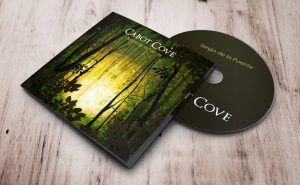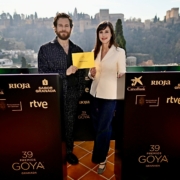Sergio de la Puente – Interview
The Spanish composer and pianist Sergio de la Puente, known for his music for the films The Missing Lynx, Clandestinos, My Straight Son or Amigos… among others, and who also has composed the music albums ‘El Fuego Vivido’ or ‘Bajo la Ciudad’, has recently released a new work: Cabot Cove.
Curro Martín had the opportunity to talk with him recently about his career, his references and inspiration when composing a soundtrack, his relationship with Michael Giacchino during the Ubeda festival, his work in Cabot Cove, and his next film project, in an exclusive interview for SoundTrackFest that you can read here.
INTERVIEW
At what point did you discover that you wanted to become a composer for the audiovisual media?
I knew it all my life, practically. My father came from the world of the image, he was a filmmaker and he loved orchestral music. My mother had worked in classical music as an amateur. The first time I heard “Star Wars” in my house with 5 years… from that moment I said “this is my thing”. I started playing that kind of melodies with the piano. I started studying at the conservatory at the age of 12 and over time it became clear to me that I either dedicated myself to film or to music, so film music united those two passions.
Do you use the piano as your first tool to compose the first sketch of a motif, melody or chords, or do you also use other instruments (real or virtual…) during this genesis of a musical idea?
The piano is always my first instrument but there are some songs with voice for which I prefer to use the guitar. The more we get into the technique, the more I hate virtual instruments… (LAUGHS). In CABOT COVE I wanted an analog and organic record, without sequencing to compose, using paper and pencil, sitting at the piano at home.
In “THE LOST LYNX” there is an approach to the symphonism of authors such as John Williams or Michael Kamen, a kind of sound that is more present than in other of your works. Which composers had most influence on you in general?
I could cite many… Of course, John Williams and Jerry Goldsmith during the 80’s. In my personal CD collection you can find from Basil Poledouris to Ryuichi Sakamoto. For my current project I have rescued sounds from Mark Knopfler from LOCAL HERO. Of course, there is also James Horner. When I heard WILLOW in 1989 it was like a slap in the face (LAUGHS). Dave Grusin in THE GOONIES seemed spectacular to me… Alan Silvestri would complete the honor roll. On the other hand, in the last years I have lost a bit of faith in the direction that current film music is taking. Some people like THE LOST LYNX because it has melody and is not repetitive, which is the opposite of today’s trend. That result was thanks to the freedom granted to me by its director Manuel Sicilia, who connected with me in that aspect from the first moment.
Is there any cinematographic genre that you feel a special predilection for when composing a soundtrack?
I would love to compose for terror. I am a great admirer of suspense. My “Holy Trinity” would be THE EXORCIST, The Changeling and The Conjuring (The Warren Files) (LAUGHS). Those kinds of movies seem incredible to me. The closest thing I have done to date in that style would be the music for the animated film EXTRAORDINARY TALES OF EDGAR ALLAN POE. It is a soundtrack recorded with real orchestra along with some samplers. It is very rich at the instrumental level, even if it has strange instruments like a saw.
Within the Hollywood industry, there are Spanish film music composers who in recent years are building a name and are highly valued. What do you think of this?
When I was in Los Angeles I realized that this is a very big machine full of gears. Once you enter, you cannot fail, since they consider that we are all replaceable. I have many colleagues there whom I adore, but I do not know if I could withstand that continuous anxiety. Here in Spain I have enough freedom, and luckily I have a lot of work. I like to be in the second line because you do not take the compliments, but neither you take the blows.
You have shared the stage with great artists ranging from Dulce Pontes to Estrella Morente, to Michael Giacchino and many other famous composers. Do you keep any special memories of any of those moments?
From Michael Giacchino I have very good memories after we met at the Film Music Festival of Úbeda, the first year. It turns out that I went to the gala of the Oscars with the team of the film THE LADY AND THE REAPER, since we were nominated and also invited by Antonio Banderas. That was the year Giacchino won the Oscar for his soundtrack for UP. After the gala, a friend and member of the team was able to talk to him and when he told him that we were there, and he asked about me. The next year in Úbeda he approached me, we talked for a while and the rest of the days we had more conversations where he told me that he liked a lot how I played the piano. He gave me his phone to talk to his agent. I gave him the album for the TV Series LOST so he could sign it for my sister and I was excited because he wrote: “Dedicated to the sister of the best pianist in Spain”. It was very beautiful. 
How is it like to work for television? Is it true that short delivery times can sometimes be strenuous for a creator?
Yes. I was working in Andalusia in some daily series and the experience was a bit overwhelming. I try to avoid that kind of work. In this profession you have to know how much time you have and prioritize. As a friend told me: “I do not know what people will tell from you when you die, but it will not be the sentence: He should have worked more” (LAUGHS). I like to take a project and treat it with the greatest affection possible, and if it has to be done too quickly, the quality of the product suffers. Everything takes time.
Regarding your work for advertising, do you follow some guidelines in particular to condense in a few seconds of music everything the spot or brand wants to tell?
I have done some things for publicity such as a spot for MasterCard, a corporate spot for Banco Santander, etc. The truth is that I have done a lot of work of that type. At the time of creating that music I use short and direct phrases that people can keep in their heads, but it has to be a short cell and a melody. As I mentioned, I rely a lot on the 80s. Once you have different ideas for music, you present them to the client and he decides.
What differentiates CABOT COVE from your two previous albums, BAJO LA CIUDAD and EL FUEGO VIVIDO?
It is an evolution, another chapter of my life. It has helped me to renew my sound and also to make balance of what these years have been like. On my second album, BAJO LA CIUDAD, I was new to Madrid and I spent the day on the subway from one place to another, hence the title. In this album, the name of CABOT COVE made me go back to childhood, since it was the town of Jessica Fletcher in the series MURDER SHE WROTE, and it had a lot of meaning for me. I wanted something natural and bucolic, like those records from the 70s, like Mike Oldfield‘s “Ommadawn”.
Speaking of Mike Oldfield, in José Ignacio Lapido’s comments about the album, he is cited as a very important reference for you. Is it through your passion for the genius of Reading that you have a strong relationship with New Age and Celtic music?
Of course. Discs like “Tubular Bells 2” or “Amarok” were very important for me. Thanks to “Ommadawn” I began to notice the richness of Celtic music. I’m very attached to it. In 1991 I was traveling through Ireland and since then I go there very often. Celtic music is very present in CABOT COVE with that warm “chimney folk” style.
There is a connection between the melody of the themes CABOT COVE, RETURN TO CABOT COVE and ECHOES. Does this relationship make the album a conceptual album? What concept would be hiding there in that case?
Yes, totally. It is the “leitmotiv” of the album. Some collaborators told me: “This album sounds like a soundtrack…” And I answered them that the album was like the soundtrack of my life. It is a concept of symphonic rock in the style of the 70s, where in many discs the initial melody returned to close the album in the last song. I would have liked to even release it on vinyl … I needed to go back to where I started. That is the essence of the album.
You currently have your own recording studio in Madrid. How did you become a producer? Was it a gradual process or were you always interested in developing that side?
Actually the studio started being for my personal use and to be able to record the soundtracks with my own instruments in a comfortable way. My dream has been to have a study of my own since I was a child. Anyway, it is open to record friends’ music and collaborations that arise. People like Amaral have been there and Coffee and Wine want to record their next album there; even the sound of some independent films has been mixed there. People likes my studio because there is a good atmosphere, it has good views… Regarding what you say about my role as a producer, I want to produce a group. It’s something I’ve never done and I really want it.
Tell us about your next movie.
It will be a science fiction film about time travel for Filmax named SIN FIN (NO END) which has been directed by the Alenda brothers. It is a very visual film. It’s going to be a hit (LAUGHS). The themes are already composed and soon I’ll start recording them. It will have a string section, although the main instrument will be the piano. Even the percussion will be done by dismantling a grand piano and collecting all its elements again. I want to do something different… These kinds of things are the ones I love.
Thank you very much for your time Sergio, it has been a pleasure to chat with you. Good luck with your album ‘Cabot Cove’ and with your next movie. We will be waiting for that soundtrack!
Thanks to you and to SoundTrackFest for the interview!
Interview by Curro Martín










